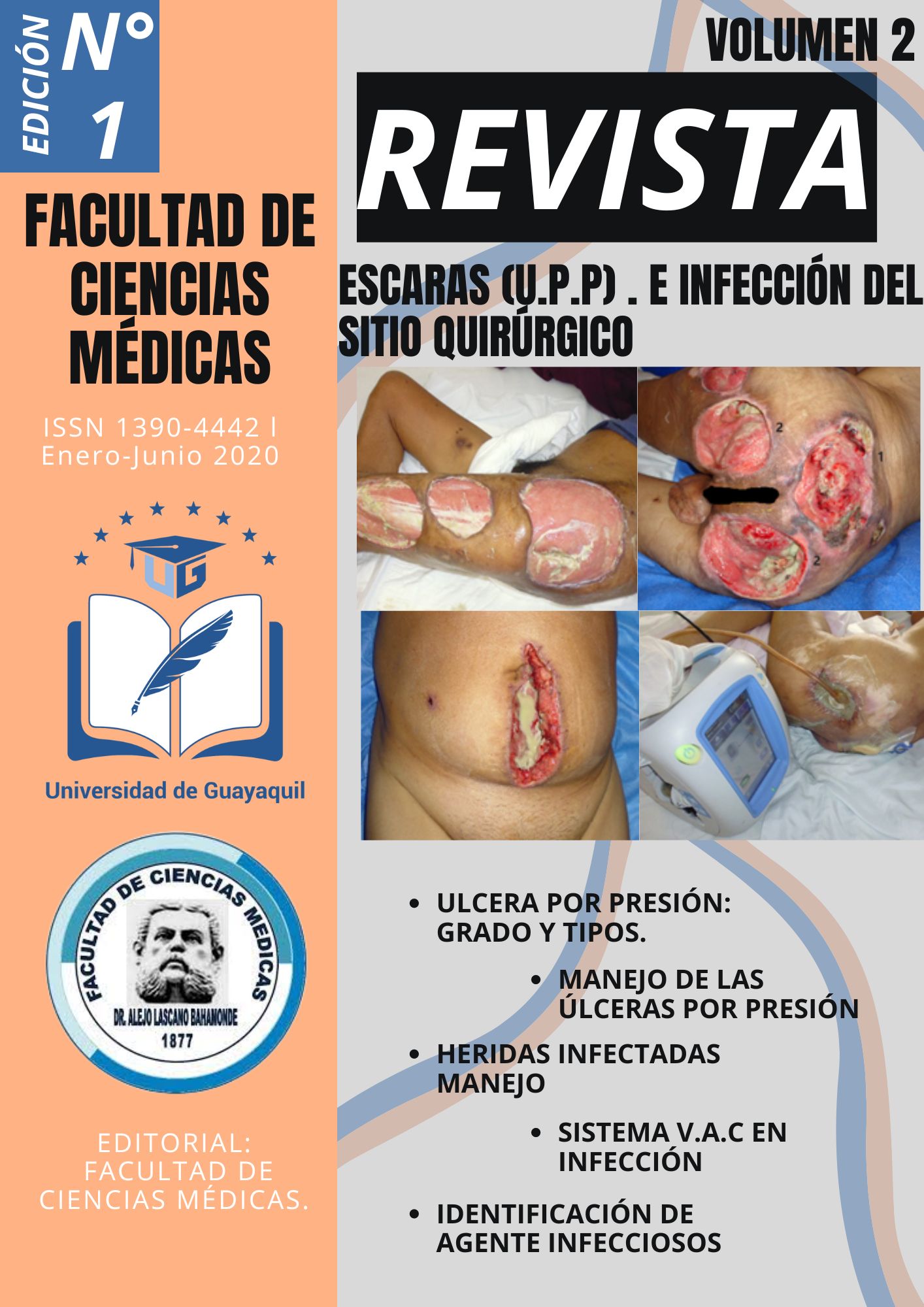Identification of the most frequent infectious agents at the surgical site of the wound
Surgery Service of the General Hospital of the North of Guayaquil Los Ceibos
Keywords:
pathogens, viruses, bacteria, surgical site, woundsAbstract
In-hospital infectious agents are frequent in health areas and these in turn can infect aseptic and antiseptic procedures, this translates into comorbidity for the hospitalized patient since the infection can spread and cannot be controlled in a normal way. The type of surgery is also a predisposing risk factor for surgical site infections since, by having various types of surgical wounds, especially abdominal ones, the normal bacterial flora of the digestive tract is greatly invaded, which are not normal in blood or skin of the surgical wound, this makes the hospital stay longer, giving rise to the risk of surgical site infection caused by bacteria, frequently in-hospital.
We identified the most frequent infectious agents that infect the surgical site of a wound in the period 2019-2020 with a total of 600 patients and 435 hospitalized in the general surgery area. It was determined that the most frequent causal agent is Escherichia Coli with 44% in 2019 and 63% in 2020, the most colonized surgical surgery was conventional appendectomy with 44% in 2019 and 50% in 2020.
References
L. ELMCEVG. Clasificacion de las heridas operatorias. Sociedad Chilena de Cirugia Pediatrica. 2017.
Leonor CGJ. Factores de riesgo asociados a las infecciones de sitio quirúrgico en cirugías electivas. 2017.
Bermúdez DGFRNDFACBDCAU. Risk factors and prevention of infections of surgical site. Revista Medica Sinergia. 2020; 5.
Gómez Viana L, Zepeda Blanco C, Morán Álvarez Á, Cid Manzano M. Manejo de las infecciones de la herida quirúrgica.
Enf. Card. Rosalba Martiñón Hernández EGCLH. Manejo de la herida quirúrgica. 2019; 8.
E Righi UACPCFGDR. Profilaxis antimicrobiana en cirugía menor y mayor.: p. 81.
Guadalupe Cabrera Alfonso JEBCFAD. Infección de las heridas quirúrgicas en pacientes operados. Revista Cubana de Urologia. 2018;: p. 95 - 105.
Bratzler DW, Dellinger EP, Olsen KM, Perl TM, Auwaerter PG, Bolon MK, et al. Clinical practice guidelines for antimicrobial prophylaxis in surgery. ;: p. 195- 283.
J. Saavedra Lozano MSSFGTHSMMLNG. Infecciones bacterianas de la piel y tejido blando. 2015;: p. 160-177.
Zenén Rodríguez Fernández Olga Fernández López GOMLIRG. Algunas consideraciones sobre las infecciones posoperatorias. Revista Cubana de Cirugía. 2017.
Eguino jcd. Estado actual de las infecciones nosocomiales. 2018.
Drs. Luis Del Aguila Hoyos EVCHAE. Cirugia General, Complicaciones Postoperatorias. 2017; 1.
Rocio ABFD. Infección de sitio quirúrgico en laparotomía de pacientes atendidos en el servicio de cirugía del hospital general Ambato del IESS. : p. 29.
Scotland TNHS. Targeted literature review: What are the key infection prevention and control recommendations to inform a surgical site infection (ISQ) prevention quality improvement tool? 2015.
Clara LAPBGBHCECAea. Guía de Profilaxis Antibiótica Quirúrgica. Sociedad Argentina de Infectología. 2017; 2da: p. 1-57.
Odionnys Ramos-Luces NMGWPDJMRAVRJGL. Infección de heridas quirúrgicas en cirugía general. 2015; 79: p. 349-355.
Maksimovic´ J MDLBMMJVH. Surgical site infections in patients: prospective cohort study. 2017.
Ferrer DGALPIyMHLM. Consideraciones actuales sobre las infecciones posoperatorias. 2016.
E. Flores Cabeza* MSSJMAEyCGM. Infecciones relacionadas con la asistencia. 2018.
López Torres RIMCEV. Manejo de heridas quirúrgicas en pacientes de las salas de cirugía de un hospital de Guayaquil. 2018.
Departamento de Medicina Interna. Archivos 2010-2017. Guayaquil, Ecuador: Hospital IESS Teodoro Maldonado Carbo. Fuente: Lcda. Cecilia Vera.





